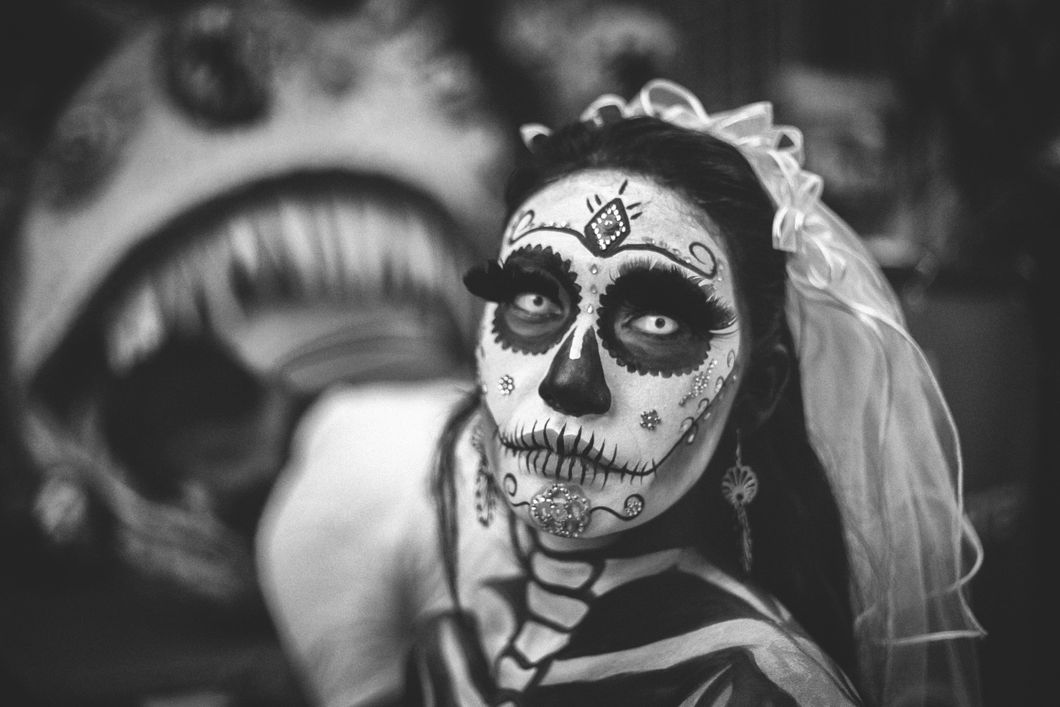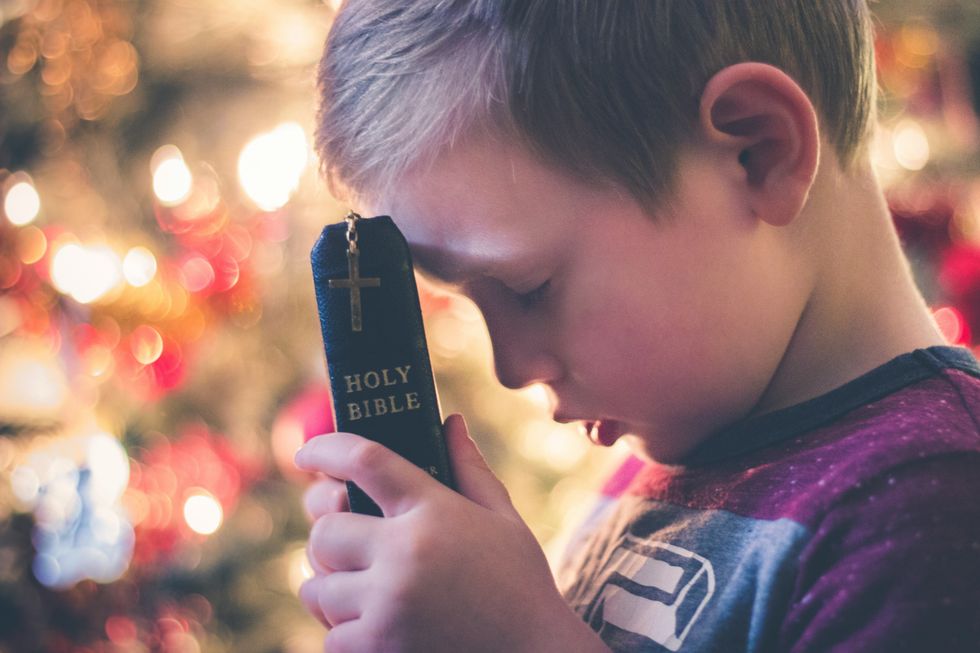When most people think of Día de los Muertos, they begin relating the holiday to our Americanized Halloween. However, that isn't the case.
Día de los Muertos (Day of the Dead) is a holiday based around remembrance, love, and the afterlife. From day 1, children are taught not to be afraid of death - but rather, they are taught to honor it. Parents will give their children toys resembling families and coffins, teaching them about the life cycle before they're really old enough to start thinking about all of the negativities that come from it. Families will begin setting up ofrendas (offerings set on a shrine to honor those that have passed) with the lost ones' favorite foods, drinks, toys, and activities. Some families believe that they need to lay down marigold petals in order for the lost ones' to find their way back to the ofrendas, but other families have begun to pull away from that part of the tradition. A big part of Día de los Muertos is the pan de muertos (bread of the dead). Pan de muertos is baked using the traditional bread ingredients, along with orange zest, orange juice, and anise seed - which is used in black licorice. Día de los Muertos begins on the night of October 31 and doesn't come to a conclusion until the night of November 2. Within this amount of time, it is believed that the adult spirits roam the Earth throughout the first 24-hour period - whereas the child spirits roam the Earth throughout the second 24-hour time period.
Americanized Halloween is the eve of All Saint's Day - a day in which Christians celebrated in honor of all the saints both known to man and unknown. However, today Halloween is seen as a "Satanic" holiday - associated with evil and the Devil himself. Whether or not this fact is true has not been proven, however many children partake in Halloween and it has become a large celebration throughout the 50 states (and other countries, yes, including Hispanic countries!). A common tradition of Halloween is Trick-or-Treating, an activity in which people (typically children) dress up in costume and go from door to door asking for treats such as candies or small toys. This tradition began in the middle ages, but it dates to the Celtic traditions the most. Celtic religions had originally believed that Halloween was the time where demons, spirits, and other creatures would roam the Earth - believing that if you were caught but disguised as one of them that they would ignore you and leave you to the living.
Although both holidays have similar traditions - art and food, for example - there are many differences throughout the holidays themselves. Many people believe the misconceptions of Día de los Muertos being the Spanish Halloween, but that isn't any farther from the truth. People in Hispanic countries do celebrate Halloween, but it is completely unrelated to the holiday of Día de los Muertos. They are similar, but they are not the same.
- Why Halloween Should Be The Entire Month Of October ›
- 31 Underrated Halloween Movies You Need To Watch This Fall ›
- 5 Fall Holidays From Around The World ›
- 19 Insensitive Costumes You Should Avoid This Spooky Season ›
- 7 Reasons Why 'Coco' Is One Of The Best Disney Pixar Movies ›



 Christmas and New Year gift card
Photo by
Christmas and New Year gift card
Photo by  butter cookies on plate
Photo by
butter cookies on plate
Photo by  boy holding Holy
boy holding Holy 












